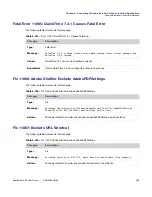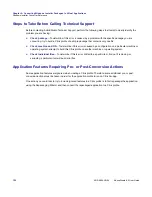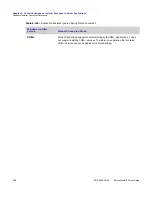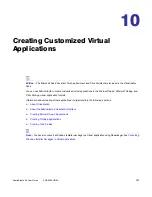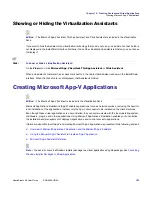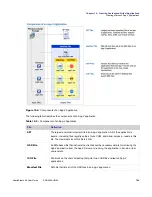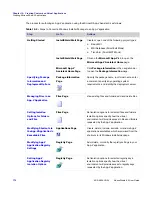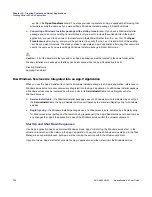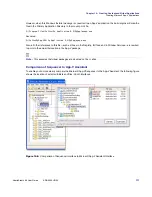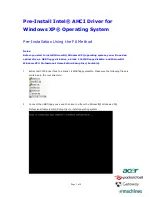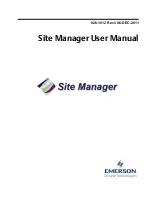
Chapter 10: Creating Customized Virtual Applications
Creating Microsoft App-V Applications
764
ADS-0950-UG00
AdminStudio 9.5 User Guide
Overview of Microsoft Application Virtualization and the
Microsoft App-V Assistant
Microsoft Application Virtualization (App-V) enables applications to run as network services, removing the need for
local installation of the applications. Instead, only the App-V client needs to be installed on the client machines.
Even though these virtual applications are never installed, they can communicate with the local operating system,
middleware, plug-ins, and other applications. Using Microsoft Application Virtualization enables you to centralize
the installation and management of deployed applications, and control access to applications.
The
Microsoft App-V Assistant
, which you can use to configure and build App-V applications, consists of the
following pages:
For information on Microsoft Application Virtualization and the App-V Assistant, see the following topics:
•
About Microsoft Application Virtualization (App-V) and the App-V Assistant
•
Components of an App-V Application
•
About the Microsoft App-V Assistant
Table 10-1 •
Pages Comprising the Microsoft App-V Assistant
Page
Description
Microsoft App-V
Assistant Home Page
Displays a diagram that illustrates the process of creating an App-V application.
Package Information
Page
Enter the package name, enter a comment, specify any operating system
requirements, and identify the deployment server.
Files Page
View existing files and folders, add and delete files, and set isolation options for
selected files and folders. Isolation options specify how the virtual environment
will provide access to files and folders requested by the App-V application.
Applications Page
Create, delete, include, exclude, or rename App-V application executables,
which are derived from the shortcuts in its Windows Installer package.
Registry Page
Add, delete, or modify the registry settings, and set the isolation options for
selected registry keys. Isolation options specify how the virtual environment will
provide access to registry keys requested by the App-V application.
Dynamic Suite
Composition Page
Use to control virtual application interaction between multiple App-V packages.
On this page, you can select one or more packages that need to be linked to this
App-V application in order for it to execute correctly.
Build Options Page
[Basic MSI Project mode] Select the releases that you want to build.
[Direct Edit or Direct MST mode] To enable the Build function for an App-V
application, select the
Build App-V application
option.
Summary of Contents for ADMINSTUDIO 9.5
Page 1: ...AdminStudio 9 5 User Guide Version 9 5...
Page 50: ...Contents 50 ADS 0950 UG00 AdminStudio 9 5 User Guide...
Page 52: ...52 ADS 0950 UG00 AdminStudio 9 5 User Guide...
Page 156: ...156 ADS 0950 UG00 AdminStudio 9 5 User Guide...
Page 440: ...440 ADS 0950 UG00 AdminStudio 9 5 User Guide...
Page 1090: ...1090 ADS 0950 UG00 AdminStudio 9 5 User Guide...
Page 1426: ...1426 ADS 0950 UG00 AdminStudio 9 5 User Guide...
Page 1686: ...1686 ADS 0950 UG00 AdminStudio 9 5 User Guide...
Page 1794: ...Chapter 24 AdminStudio Public API Reference 1794 ADS 0950 UG00 AdminStudio 9 5 User Guide...
Page 1842: ...Index 1842 ADS 0950 UG00 AdminStudio 9 5 User Guide...




